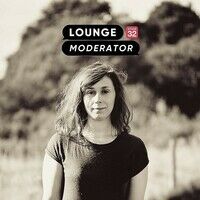Let's chat project layout!
This isn't so crucial with >5 minute long shorts, but with 5+ and especially with feature, having a clear project layout can really help.
What top tips do you have for project organisation? Anything you've learnt through experience?
Here are some of my top tips. I've tried to use non-DAW specific language but if anything is unclear then just ask!
Markers
Develop a clear pattern of markers. I use one colour to denote the start of a cue and another to denote the end. I use a different colour for notes that the director has given. I also use a fourth colour for any other hit points/my own notes. All markers are clearly labelled for ease.
Regions
When dealing with a long film it's sometimes hard to find the cue you're looking for. Rather than going to the beginning and counting or having to zoom in on the first marker of every cue, try creating regions/areas with labels so you can easily see a cue number from afar. See the attached picture for a marker/region example.
Routing and layout
Lots of us will mix/master our own work (at least some of the time). So in the interest of time saving, it can be helpful to organise the tracks in order and with good routing so you can mix as you go. On a basic level, parent/folder tracks (e.g. upper strings, lower strings, low percussion etc.) are an easy place to start. You can create your parent/folder track (e.g. upper strings) then underneath that add the appropriate instruments (e.g. first violins, second violins, different articulations) underneath. This also saves CPU because you can use the same EQ on the parent/folder rather than adding it to each instrument individually. It also makes it easier to navigate big layouts because everything is clearly organised. I also add colours to each set of parent/child tracks so it's easier to visually see where each group of instruments starts and ends.
Routing gets a little more complex. You can add all kinds of complexity if you're really getting into a mix, but here's a quick layout idea.
Create a track called "sub" right at the top of your project. This will be the only track with a master send output. Underneath that create your reverbs, e.g. reverb long (3-6+ seconds depending on what you're doing) or reverb short (0.1-3 seconds, again, depending on the project). It's a good idea to EQ these reverbs either within their UI or by adding an EQ after them on the channel strip. Remove the master send from the reverbs and instead send them through the sub.
Under the reverbs add Aux tracks for each of the parent folders, e.g. "Upper Strings Aux". Set these aux tracks to go through the sub with no master send. Also send them to whichever reverb they need (don't forget to alter the reverb send volume levels as needed- you can use automation to change the amount of send volume/pan etc through the track, so you're not constrained to picking one volume and leaving it there).
Then head back to your parent/folder tracks. Send each of them to go to the appropriate aux channel and remove their master send. And voila, you have a tidy, routed project, ready to be mixed as you go!
Navigation
When you're working with feature films, it can be hard to jump around quickly. I've recently started using Reaper's navigation tool embedded into the bottom of the screen. It took a bit of practice to actually land where I intended each time, but now I've mastered it it's super helpful. Check out whatever navigation capacities your own DAW has.
Would love to hear what other people have found useful when it comes to laying out projects!


















1 person likes this
Thank you... : )
So very welcome, Arlan. Fantastic to have you in the community.